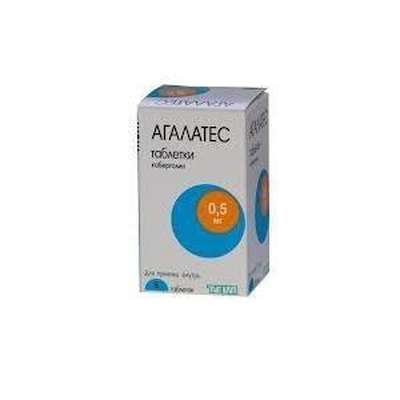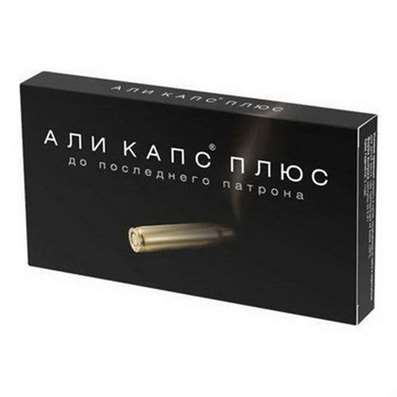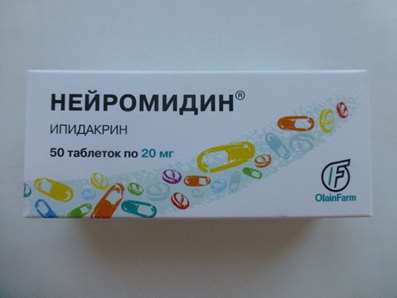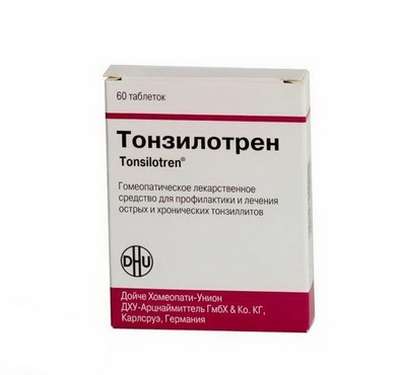Instruction for use: Tolperisone + Lidocaine
I want this, give me price
Pharmacological group
n Cholinolytics (muscle relaxants) in combination
Nosological classification (ICD-10)
G04 Encephalitis, myelitis and encephalomyelitis
Disseminated acute encephalomyelitis, Leukoencephalitis, Meningomielitis, Myelitis, Acute encephalitis, Acute encephalomyelitis, Chronic encephalitis, Chronic encephalomyelitis, Encephalitis, Encephalomyelitis, Inflammation of meninges
G24.8.0 * Muscle hypertonicity
Increased muscle tone, The spasm of the striated muscles due to organic diseases of the CNS, muscle Spasticity, Painful muscle spasms in spinal diseases, Increased skeletal muscle tone
G25.9 Extrapyramidal and movement disorder, unspecified: bradykinesia; Restlessness; Movement disorders; Meiji syndrome; Muscle rigidity Muscle spasticity; Muscle tension; Pyramidal disorder; The defeat of the pyramidal tract; The rigidity of the muscles; Extrapyramidal syndrome; Spastic paralysis; Extrapyramidal hyperkinesia.
G35 Multiple sclerosis
Disseminated sclerosis, multiple sclerosis, Relapsing Multiple Sclerosis, Secondary progressive multiple sclerosis, Exacerbation of multiple sclerosis, Mixed forms of multiple sclerosis
G99.2 Myelopathy in diseases classified elsewhere
Myelopathy, Chronic myelopathy
I64 Stroke, not specified as hemorrhage or infarction
Primary stroke, Stroke, Stroke in the course of, microstroke, stroke, The completed stroke
I70.2 Atherosclerosis of the arteries of the extremities
Arteriosclerosis obliterans, Arteriosclerosis of peripheral arteries, Atherosclerosis of lower limb arteries, Atherosclerosis of peripheral arteries, Atherosclerosis of the vessels of the extremities, Obliterating disease of lower extremities, Obliterating atherosclerosis, Obliterating arteriosclerosis of lower limb arteries, Obliterating arteriosclerosis of the vessels of the upper limbs, Obliterating atherosclerosis of vessels of lower extremities, Atherosclerosis of the arteries of the extremities,Arteriopathy of the extremities, Obliterating atherosclerosis of the vessels of the extremities, Obliterating arteriosclerosis
I73 Other peripheral vascular disease
Angiopathy peripheral, Arteriopathy of the extremities, Disease of the arteries of the extremities, Peripheral arterial blood flow disorders, Insufficiency of arteriovenous blood circulation, Obliterating Artery Disease, Obliterating endarteritis, Obliterating endarteritis with severe intermittent claudication, Chronic obliterating diseases of the arteries of the extremities, Chronic obliterating diseases of peripheral arteries, Endarteritis obliterans, Ischemic lesions of feet
I73.0 Raynaud's Syndrome
Reynaud-Lerish syndrome, Raynaud's disease, Raynaud phenomenon, Reynaud-Lerish syndrome, Raynaud's disease, Reynaud's syndrome with trophic disorders, Peripheral angiopathy
I73.1 Obliterating thromboangiitis [Buerger's disease]
Berger's disease, Thromboangiitis obliterans, Thromboangiitis, Obliterating thromboangiitis
I73.8 Other specified peripheral vascular diseases
Intermittent claudication syndrome, Endarteritis obliterans, Acrocyanosis, Peripheral angiospasm, Obliterating endarteritis, Intermittent claudication, Disorders of innervation of blood vessels, Spasm of peripheral arteries, Arterial angiopathy, Venous insufficiency and its complications, Spasm of peripheral vessels, Spasm of the coronary vessels, Endarteritis, Cooling of the feet, Occlusion disorders of peripheral circulation, Occlusion of peripheral vessels
I79.2 Peripheral angiopathy in diseases classified elsewhere
Diabetic angiopathy, Angiopathy in diabetes mellitus, Diabetic arteriosclerosis, Pain in peripheral nerve lesions, Diabetic angiopathy, Diabetic microangiopathy, Diabetic vascular injury, Intermittent angioedema dysbasia, Macroangiopathy in diabetes mellitus, Microangiopathies, Microangiopathy, Microangiopathy in diabetes mellitus, Tingling sensation in the arms and legs, Sensation of coldness in the extremities, Peripheral Angiopathy, Peripheral artery disease, Sclerosis of Menkeberg, Chronic obliterating diseases of the arteries
M19.9 Arthrosis, unspecified
Change in brush with osteoarthritis, Osteoarthritis, Osteoarthrosis, Arthrosis of large joints, Pain syndrome in osteoarthritis, Pain syndrome in acute inflammatory diseases of the musculoskeletal system, Pain syndrome in chronic inflammatory diseases of the musculoskeletal system, Deforming arthrosis, Deforming osteoarthritis, Deforming osteoarthritis of joints, Osteoarthritis in the acute stage, Osteoarthritis of large joints, Acute pain syndrome with osteoarthritis, Post-traumatic osteoarthritis, Rheumatic osteoarthritis, Spondylarthrosis, Chronic osteoarthritis
M34 Systemic sclerosis
Scleroderma, Scleroderma generalized, Scleroderma diffuse, Scleroderma universal, Sclerosis systemic progressing, Buschke's disease, Sculpting adults, Sclera aponeurotic benign
M47 Spondylosis
Spondyloarthrosis, spondylarthrosis, Diseases of the spinal column, spondylosis
M54.2 Cervicalgia
Pain syndromes in the neck, Pain in the neck, Pain in the neck, Symptom of Lermert
R26.2 Difficulty walking, not elsewhere classified
Intermittent angioedema dysbasia
R25.2 Cramp and spasm
Muscle spasms in tetanus, Pain smooth muscle spasm, Pain spasm of smooth muscles (renal and biliary colic, intestinal spasms, dysmenorrhea),Pain spasm of smooth muscles of internal organs, Pain spasm of smooth muscles of internal organs (kidney and biliary colic, intestinal spasms, dysmenorrhea), Painful muscle spasm, mimic spasm, spasticity, Muscle spasms, Muscle spasms of central origin, Muscle spasms, Neurological contracture with spasms, Night cramps in the extremities, Night leg cramps, Symptomatic convulsive state, West syndrome, Smooth muscle spasm, Spasm of vascular smooth muscle, muscle spasm, The spasm of the striated muscles due to organic diseases of the CNS, Skeletal muscle spasm, The spasms of smooth muscles of internal organs, The spasms of skeletal muscles, Spastic condition of striated muscle, Spastic pain, Spasmodic state of smooth muscle, Spasticity skeletal muscle, muscle cramps, convulsions, Leg cramps, Seizures of central origin, convulsive states, Spastic syndrome, Convulsive status in children, Tonic seizures, Cerebral spastic syndrome, Phenomenon jackknife
Z100 * CLASS XXII Surgical practice
Abdominal surgery, adenomectomy, Amputation, Coronary angioplasty, Angioplasty of the carotid arteries, Antiseptic skin treatment for wounds, Antiseptic Hand, Appendectomy, atherectomy, Balloon coronary angioplasty, Vaginal hysterectomy, The coronary bypass, Interventions in the vagina and cervix, Interventions on the bladder, Intervention in the mouth, Restoration and reconstructive surgery, Hand hygiene of medical personnel, Gynecologic surgery, Gynecological intervention, Gynecological surgery, Hypovolemic shock during operations, Disinfection of purulent wounds, Disinfection of wounds edges, Diagnostic intervention, Diagnostic procedures, Cervical Diathermocoagulation, Long-surgery, Replacing the fistula catheters, Infection in orthopedic surgery, Artificial heart valve, cystectomy, Short-term outpatient surgery, Short-term operation, Short surgical procedures, Krikotireotomiya, Blood loss during surgery, Bleeding during surgery and in the postoperative period, Kuldotsentez, laser photocoagulation, laser coagulation, retinal laser coagulation, Laparoscopy, Laparoscopy in Gynecology, CSF fistula, Small gynecological operations, Small surgical procedures, Mastectomy and subsequent plastic, mediastinotomy, Microsurgical operations on the ear, Mukogingivalnye operation, suturing, Minor surgery, neurosurgical operation, Immobilization of the eyeball in ophthalmic surgery, testectomy, pancreatectomy, Perikardektomiya, The period of rehabilitation after surgery, The period of, convalescence after surgery, Percutaneous transluminal coronary angioplasty, Pleural thoracentesis, Pneumonia postoperative and posttraumatic, Preparation for surgical procedures, Preparation for surgery, Preparation of the surgeon's hands before surgery, Preparation of the colon for surgical procedures, Postoperative aspiration pneumonia in neurosurgical and thoracic surgery, Postoperative nausea, Postoperative bleeding, postoperative granuloma, postoperative shock, The early postoperative period, myocardial revascularization, Radiectomy, gastric Resection, bowel resection, uterine Resection, liver Resection, enterectomy, Resection of part of the stomach, Reocclusion of the operated vessel, Bonding tissues during surgical procedures, Removal of sutures, Condition after eye surgery, Condition after surgery, Condition after surgery in the nasal cavity, Condition after gastrectomy, Status after resection of the small intestine, Condition after tonsillectomy, Condition after removal of the duodenum, Condition after phlebectomy, Vascular surgery, Splenectomy, Sterilization of surgical instruments, Sterilization of surgical instruments, sternotomy, Dental surgery, Dental intervention in periodontal tissues, strumectomy, Tonsillectomy, Thoracic surgery, total gastrectomy, Transdermal intravascular coronary angioplasty, Transurethral resection, Turbinektomiya, Removal of a tooth, cataract surgery, Removal of cysts, tonsillectomy, Removal of fibroids, Removing the mobile primary teeth, Removing polyps, Removing broken tooth, Removal of the uterus body, Removal of sutures, Urethrotomy, Fistula likvoroprovodyaschih ways, Frontoetmoidogaymorotomiya, Surgical infection, Surgical treatment of chronic limb ulcersm, Surgery, The surgery in the anal area, The surgery on the colon, Surgical practice, The surgical procedure, Surgical interventions, Surgery on the gastrointestinal tract, Surgical procedures on the urinary tract, Surgical procedures on the urinary system, Surgical intervention of the genitourinary system, Surgical procedures on the heart, Surgical manipulation, surgery, Surgery on the veins, Surgical intervention, Vascular surgery, Surgical treatment of thrombosis, cholecystectomy, Partial gastric resection, transabdominal hysterectomy, Percutaneous transluminal coronary angioplasty, Percutaneous transluminal angioplasty, Coronary artery bypass, tooth Extirpation, Extirpation of milk teeth, pulpectomy, pulsative cardiopulmonary bypass, tooth Extraction, teeth Extraction, cataract extraction, Electrocoagulation, endourological intervention, episiotomy, Etmoidotomiya, Complications after tooth extraction
Z54.0 recovery period after surgery
Conditions after brain surgery, Status after removal of gallstones, Conditions after surgery, The recovery period after surgery, The period of convalescence after surgery, The rehabilitation period after surgery, The period of rehabilitation after surgery, The period of convalescence after surgery, The period of convalescence after surgery, Convalescence in the postoperative period, The period of recovery after surgery on the eyes, The period after hemorrhoidectomy, The period after the surgery, The period of postoperative rehabilitation, The period of rehabilitation after injury
Characteristics
Miorelaxant of central action.
Pharmacology
Pharmacological action - miorelaksiruyuschee.
Pharmacodynamics
Tolperisone hydrochloride
It is the central muscle relaxant. The exact mechanism of action is unknown. As a result of membrane-stabilizing action it prevents the excitation in primary afferent fibers, blocking mono- and polysynaptic reflexes of the spinal cord. Probably, the secondary mechanism of action is to block the release of the transmitter by blocking the entry of calcium ions into the synapses.
Reduces reflex readiness in the reticulospinal tract of the brainstem.
Strengthens the peripheral circulation. This effect is not related to the effect on the central nervous system and may be due to the weak antispasmodic and anti-adrenergic action of tolperisone.
Lidocaine hydrochloride
It has a local anesthetic effect and when dosing a combination of tolperisone + lidocaine according to the instructions, the systemic effect does not.
Pharmacokinetics
Tolperisone hydrochloride
It is subject to intensive metabolism in the liver and kidneys. It is excreted by the kidneys, almost exclusively (> 99%) in the form of metabolites whose pharmacological activity is unknown. With iv injection of T1 / 2 - 1.5 hours.
Lidocaine hydrochloride
Absorption is complete (the rate of absorption depends on the site of administration and the dose). Tmax with the / m introduction - 30-45 min. The connection with plasma proteins is 50-80%.
Rapidly distributed in tissues and organs. It penetrates the GEB and the placental barrier, it is secreted with the mother's milk (40% of the concentration in the mother's plasma). Metabolised in the liver (by 90-95%) with the participation of microsomal enzymes by dealkylation of the amino group and breaking of the amide bond with the formation of active metabolites. It is excreted with bile (part of the dose is reabsorbed in the digestive tract) and kidneys (up to 10% unchanged).
Indications
Hypertonus and spasm of the striated musculature, arising from organic diseases of the central nervous system (including the defeat of pyramidal tracts, multiple sclerosis, stroke, myelopathy, encephalomyelitis), musculoskeletal system (including spondylosis, spondyloarthrosis, cervical and lumbar syndromes, Arthrosis of large joints); Restorative treatment after orthopedic and traumatological operations.
As part of complex therapy: obliterating vascular diseases (obliterating atherosclerosis, diabetic angiopathy, obliterating thromboangiitis, Raynaud's disease, diffuse scleroderma); Diseases arising from the disorder of vascular innervation (acrocyanosis, intermittent angioedema dysbasia).
Contraindications
Hypersensitivity (including to lidocaine); Severe myasthenia gravis; pregnancy; Lactation period (due to lack of data); Children's age till 18 years.
Restrictions on the use
Patients with renal and hepatic insufficiency. Correction of the dose is not required.
pregnancy and lactation
The combination of tolperisone + lidocaine can be used when the expected benefit to the mother exceeds the potential risk to the fetus (especially in the first trimester of pregnancy).
Side effects
Muscle weakness, headache, arterial hypotension, nausea, vomiting, a feeling of discomfort in the abdomen.
Rarely - allergic reactions (skin rash, including erythematous, urticaria, itching, angioedema, anaphylactic shock, dyspnea).
Interaction
Data on the interaction with drugs that limit the use of a combination of Tolperisone + lidocaine, no. It is possible to use with sedatives, hypnotics and preparations containing ethanol. Does not increase the effect of ethanol on the central nervous system. Strengthens the effect of NSAIDs, so with a simultaneous appointment, you may need to reduce their dose.
Overdose
Symptoms: ataxia, tonic and clonic convulsions, dyspnoea and respiratory arrest.
Treatment: symptomatic and supportive, there is no specific antidote.
Routes of administration
In / m, in / in.
Precautions
Influence on the ability to drive vehicles and mechanisms. Care must be taken when driving vehicles and engaging in other potentially hazardous activities that require increased concentration and speed of psychomotor reactions

 Cart
Cart





